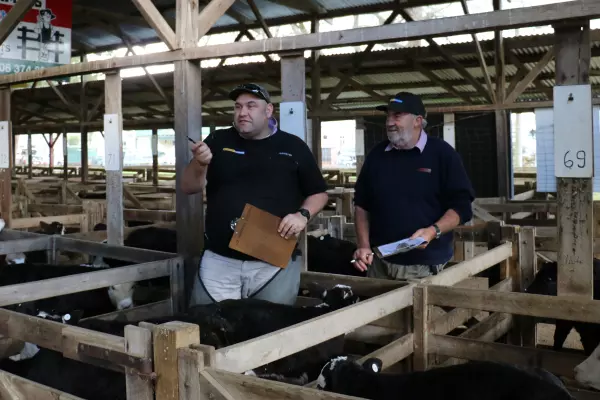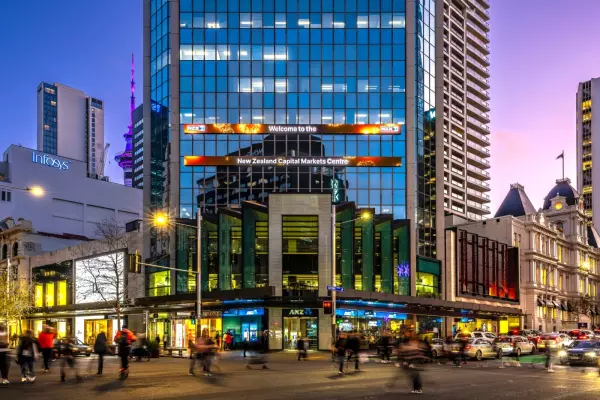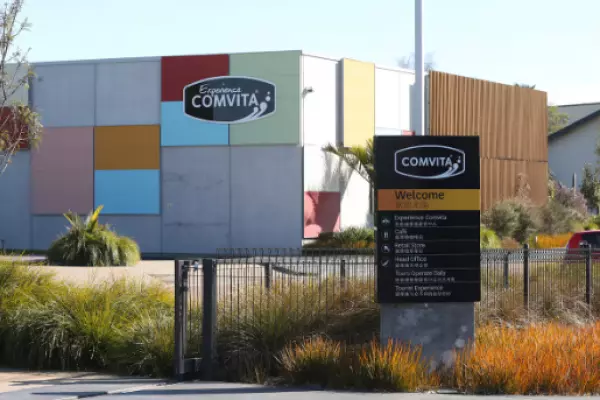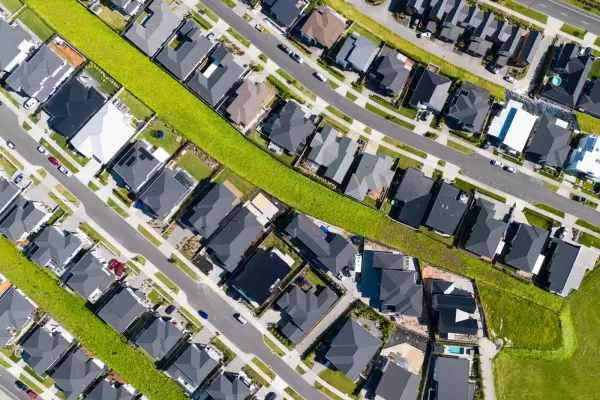After New Zealand’s delta outbreak flummoxed economists and saw the Reserve Bank step back from its much-predicted interest rates hike, here’s what the big banks are now predicting for the economy and the lockdown impact.
BNZ
We’ve beaten back the previous covid invasions but it leaves no certainty that we can get on top of this new, much more offensive, variant. As things stand, confidence levels are up, especially in government circles, that we can succeed again. And there is a feeling amongst the general populace that we can wait this out, but only time will tell whether this will be so or whether this is misplaced hope.
One thing is for sure, the speed at which we have locked down, and the aggressiveness of that lockdown can only work in our favour. Moreover, the compliance of New Zealanders (while it lasts) will also have a substantive bearing. And while the pain will be felt, the government is well placed to provide substantial stimulus to the economy to keep people in employment and businesses afloat, as was the case previously.
There are also fewer businesses vulnerable to failure. Big chunks of the international tourism sector are no longer there, as is the case for multiple other small businesses, especially in the retail sector. The very fact we have been here before provides a degree of understanding and resilience that wasn’t there during the first lockdown.
And, last but not least, there is a clear end in sight one way or t’other. In short, by the end of this year, NZ is on track to have all those in the adult population who wish to be vaccinated. If so, the days of lockdowns are now numbered.
What is clear, though is we are not talking days but rather weeks, potentially months, before we all get back to level 1...
Treasury concluded that “relative to normal” activity levels would drop between 25% and 30% if the entire economy was in level 4. The impact would reduce to a 10% to 15% decline under level 3, 4% to 6% under level 2, and 3% to 4% under level 1. Assuming these are accurate estimates then any expected decline in activity now needs to be adjusted/reduced by the 3% to 4% penalty the economy was already suffering under level 1, which is the new normal.
We clearly don’t know what the extent of the lockdown will end up like. But let’s assume the whole country stays in level 4 until August 31 but then drops to level 3. Auckland stays at level 4 for four weeks until mid-September and then drops down the levels by one step each fortnight. The rest of the country also drops down the levels, remaining one level below Auckland. The whole country is back in level 1 by mid-October. Were this to be the case it would mean, at face value, that activity in the September quarter will fall around 7% compared to June but then increase around 8% in December, as the level of restrictions is lifted. The March quarter would have us back where we began. This is obviously a very simplistic way of looking at the world but it paints a picture of what the economy might look like. Of course, things will change depending on the duration of the various restrictions.
Kiwibank
This ain’t our first rodeo.
The businesses we have spoken to are in a better headspace, compared to the last major lockdown of last year. Businesses have adapted, balance sheets are stronger, and government policy is tried and tested. Indeed, to address the immediate disruption and hit to the economy, emergency fiscal policy is the best tool. The government has already announced the availability of the wage subsidy. Finance minister Grant Robertson reported that more than 47,0000 businesses had applied for the subsidy, of which 28,000 had already been checked and approved. The wage subsidy should cushion the blow.
Previous experience also reminds us that demand is deferred, not destroyed. Economic activity will flatline during the lockdown. But once the restrictions are relaxed, activity will rebound and spending will catch up. For the time being, we’re window shopping – virtually – waiting for the doors to reopen – physically. We enter this lockdown with much more confidence.
Demand is resilient as we’re at (or through) maximum sustainable employment and wages are rising. Importantly, the Reserve Bank of NZ (RBNZ) has much more confidence in the economic outlook and remains on a path to significantly reduce monetary policy stimulus.
It’s clear that the RBNZ’s sights are set on the medium-term. And the outlook is much stronger than envisioned back in May. The RBNZ’s new set of forecasts were revised significantly. The labour market is expected to tighten further. The unemployment rate is forecast to fall sub-4%, albeit supported by the current skill mismatch issue. And inflation is expected to spike to 4% as firms pass on higher costs.
Looking at the new forecasts, it’s clear that the RBNZ has met its mandate. Emergency monetary policy settings no longer seem warranted. Had we not gone into lockdown, the RBNZ would have delivered a 25 basis points hike. Indeed, the decision to keep the cash rate on hold was a hawkish one. That said, a large asterisk should be marked next to the RBNZ’s forecasts. Because these were finalised before the lockdown announcement. However, if the lockdown is short-lived, the impact to the economy will be relatively limited. Activity will bounce back once the restrictions are relaxed. The medium-term outlook remains broadly unchanged. And the RBNZ has shown bias toward tightening policy. A rate hike in October is a done deal, and it would take an extended lockdown to alter their course. A lockdown of 2-4 weeks would most likely be seen as economically manageable. An extended, Australian-type, lockdown would definitely test the RBNZ’s resolve to hike from October. We hope the lockdown is short, and we hope we’re in a position for the RBNZ to remove stimulus.
Westpac
Well, that escalated quickly.
It’s looking likely that the initial restrictions will be extended, and there will be some disruption to the recent strong momentum in economic activity. Against this backdrop, the RBNZ stayed pat last week. Nevertheless, a series of rate hikes are still on the cards. We now expect these to begin in November.
It's looking likely that activity restrictions will remain in place for some time, with stricter restrictions in Auckland likely. Past experience with covid lockdowns and restrictions gives us some idea of what impact lockdowns will have on economic activity.
We’ve previously estimated that at alert level 4, the value of lost activity is around $1.5 billion per week (about 0.6% of annual gross domestic product). In contrast, the impact at alert level 3 is significantly lower at around $600 million per week, while the effects of alert level 2 restrictions are small overall and limited to a few sectors.
It’s not quite as straightforward as this though, as the ultimate impact of lockdowns also depends on the length of time spent at each alert level. In a short successful lockdown, a large proportion of spending ends up being delayed rather than lost altogether. But the longer the lockdown, the less likely that lost activity will be caught up at a later date. Whatever the cost of early action may be, it pales in comparison to the potential cost of a slow response that results in a longer period of restrictions. This highlights a point we have often made: In the long run, there is not a trade-off between public health and the economy.
The government has already reintroduced the wage subsidy programme and support for affected businesses. This was an important part of limiting the longer-term economic scarring from last year’s level 4 lockdown, by helping to keep people attached to the workforce. The cost of this to the government will be large but manageable, as tax revenue is already several billion dollars ahead of what was projected in the May Budget.
Prior to the outbreak, we had expected that the RBNZ would raise the cash rate at last Wednesday’s review.
The decision to keep the cash rate on hold will most likely prove to just be a delay. Indeed, the RBNZ’s policy statement signalled that it doesn’t think the ‘emergency’ policy settings put in place in the wake of last year’s covid outbreak are needed anymore.
As we’ve seen over the past year, economic activity has tended to bounce back quickly once restrictions are lifted. And if that does happen again, the RBNZ will soon be confronted with many of the same issues that it faced before – an economy that is running up against capacity constraints and which is at risk of a more sustained period of inflation pressures. In addition, while it’s true that the latest lockdown will weigh on demand in the near term, the RBNZ has correctly noted that easier monetary policy is not the best response to lockdown conditions themselves.
Instead, fiscal policy is the best way to provide support. And this is in fact happening, as the government has reintroduced the measures that it used in previous lockdowns, such as the wage subsidy scheme. There’s a wide range of possibilities as to when and how quickly the country will be able to step down the alert level ladder. At this stage, we’ve pencilled in the start of rate hikes in November.
However, depending on the trend in covid cases, a hike at the October meeting is still a possibility. Further ahead, and assuming the economy returns to the solid growth path we’ve seen recently, we expect a series of hikes at the February, April and May policy meetings. After that, we expect the RBNZ will pause for a period to assess how the economy is tracking, with gradual increases expected beyond that time. We expect the cash rate will reach a peak of 2% by the end of 2023 – around the RBNZ’s current estimate of a neutral level. Given the strength of economic activity and inflation in recent months, it’s been suggested that the RBNZ may look at a 50bp hike when the tightening cycle eventually begins (effectively ‘catching up’ the hike that was postponed in August). We think that is doubtful.
ASB
About a week after the government’s indication of how it plans to ease open the border, and on the eve of the RBNZ’s pivotal monetary policy announcement, the game abruptly changed. Covid is no respecter of the best-laid plans of mice and humans.
So here we are, back into the strictest lockdown settings that we have not needed since the initial outbreak. It will be tough for many, but we have learnt crucial lessons from Australia about the pitfalls of dallying. NSW’s chances of eliminating its outbreak are vanishing quickly and it is in a drag race to get people vaccinated to contain growing pressure on its health system.
Our level 4 looks likely to be extended at today’s announcement. The economic impact of this lockdown depends heavily on how long the stricter level 4 and level 3 conditions remain in place. Our estimates are that during a nationwide level 4 lockdown we forego activity worth around 0.5-0.6% of annual GDP ($1.9b) per week. Each week of Auckland at level 4 and the rest of the country at level 3 would be around 0.3% per week. And Auckland at level 3 and the rest of the country at level 2 quickly drops the loss to 0.1% per week.
But a chunk of that foregone activity does get made up for afterwards. What we have learnt from the Auckland-centric lockdowns in August/September last year and February/March this year is that relatively short lockdowns only have modest long-term effects. There is a lot of pent-up activity that gets made up for afterwards, though the longer the strict conditions are in place, the less catch-up there will be of some activities.
At this stage, higher interest rates look temporarily on hold. The RBNZ last week seemed very gung-ho about still seeing a clear need to lift interest rates and is increasingly worried about the heights that house prices have scaled. The governor himself has said central banks need to start taking a long-term view of assuming that covid will be endemic globally and some form of people restrictions and bouts of ‘severe disruption’ will happen from time to time.
With that in mind, our drawn-in-the-sand assumption is that the RBNZ will lift the official cash rate (OCR) in October, November and February to 1%, then more slowly lift it to 1.5% by end-2022. Our warning is that lines in the sand get washed away daily by the tide. If level 4 lockdown conditions go on longer than a couple of weeks the chances of the RBNZ starting a bit slower will increase. Borrowers and depositors alike should, for the time being at least, consider that interest rates are still likely to rise over time.
But in reality, until the lockdown is over the timing and eventual magnitude of overall OCR increases will be up in the air. Meanwhile, we have let one get past the goalie again and still seem to have room for improving border processes. And if L4 will be the delta go-to option even with high levels of vaccination, we should be constantly learning and evolving its processes and execution. Minimising the likelihood of L4 and impacts of L4 has huge benefits to all. For those of you uncertain of what support you can get from ASB and the government please read our resources here. Beyond that, it is important to know that sourdough bread is out, scones are apparently in – which sounds a lot less troublesome. Just don’t be ‘that guy’ at the supermarket with a trolley filled with flour bags. Take care everyone.
ANZ
Clearly, the increased infectiousness of delta makes this a much higher-risk situation than otherwise. But there are other factors that work in our favour this time: the contact tracing system is up and running; we have over 20% of the population vaccinated (better than nothing!); testing and genome sequencing is much more organised than last time; we have one source case, not hundreds; and level 4 lockdown was implemented as rapidly as possible.
And as for the economic fallout, we also have a head start: the rollout of fiscal support will be seamless rather than a mad scramble; business balance sheets are in good shape after a period of very strong demand; and households will be much more confident about their employment prospects. The other reason that even a more prolonged lockdown might not shut down the case for OCR hikes (even quite soon) is the fact that they have not tended to be deflationary. And when it comes to the crunch, the RBNZ is an inflation targeter, with the rest being nice-to-haves.
Supply restrictions only intensify with lockdowns as labour mobility and productivity plummets. For it to become a net deflationary event, household incomes (and demand) would need to deteriorate markedly, and businesses would have to delay and/or cancel their investment plans (ie not just a lockdown-induced delay). What about the housing market? It’s famous for having nine lives, of course, but with house prices up 30% year-on-year it may have fewer than that currently. However, provided we avoid a significant income or employment shock, housing market momentum is unlikely to be adversely affected. In the last read, households house price expectations actually lifted from 5.8% to 6.4% – not a particularly useful series for forecasting house prices, to be fair, but certainly evidence that households consider the housing market to be alive and well. In the near term, listings are likely to decline alongside sales, keeping the market tight. And it appears that further mortgage rate increases just got delayed by six weeks, which, all else equal, is a marginally more persistent tailwind than otherwise. So we’re not currently seeing a need to make lockdown adjustments to our house price forecast.
Are there limits to fiscal support? Yes, there is a point where the government’s ability to borrow will be curtailed by its projected ability to pay that money back. But with core Crown net debt projected to peak below 50% of GDP (based on the Treasury’s now too-pessimistic Budget forecasts) we’re not even close to that scenario. The government is well placed to respond to this. While there’s only around $5bn remaining in the Covid Response and Recovery Fund, this figure shouldn’t be viewed as a constraint should more support be needed. The latest snapshot of the government’s books showed tax revenue running ahead of the Treasury’s forecast in the eleven months to May, to the tune of $4.1b. And the economy has only continued to outperform the Treasury’s forecast since.
We estimate there could be an additional $10b in the government’s kitty just on positive economic surprises alone. In other words, additional debt probably won’t need to be raised for the fiscal response, even if that response ends up exceeding $5bn. From a funding perspective, the $38b or so sitting in the Crown Settlement Account shows New Zealand Debt Management are more than well placed to facilitate whatever the government needs to do.
These excerpts have been lightly edited and shortened for brevity and style.














